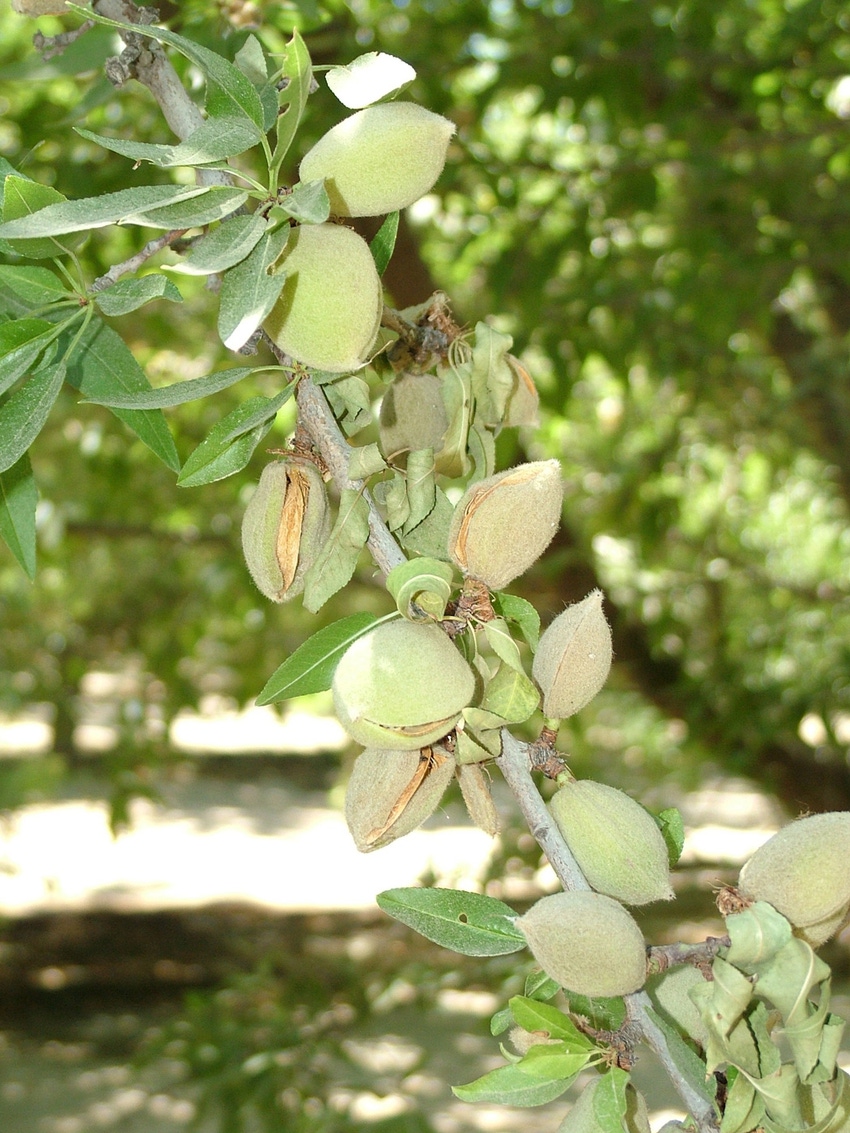July 6, 2016

Eyeing his almond orchards in early July, Madera County grower Dave Hansen liked what he saw.
“The trees looked healthy and the crop appeared as good or better than last year,” says Hansen.
The trees include his own 18-acre orchard, plus the 500 acres that he helps his godfather Ty Greg manage.
Although the majority of the trees are Nonpareil, others include the pollinators Aldrich, Butte-Padre, Fritz, Mission, and Monterey.
Last year, almond yield failed to meet Hansen’s early expectations. He predicted yields in many younger tree blocks at around 3,000 to 3,100 meat pounds per acre. The actual figure came in at 2,500 to 2,500 pounds or 500 to 600 pounds less.
“I got fooled,” he admits.
This year, Hansen is taking a more conservative approach estimating the 2016 crop size. He predicts his 2016 Nonpareil crop, which appears larger than last year, at 2,500 to 2,700 meat pounds per acre. Hansen estimates his Sonora crop yield, which he describes as fairly good, at around 2,100 pounds.
And, rather than be disappointed, he’s guessing the Fritz yield at 2,500 to 2,800 meat pounds.
He expected Nonpareil hull split the first week of July, two to three days later that last year. To prepare for this, he started ovicide sprays to control Navel orangeworm on June 23, based on degree-day totals.
His main early-season disease concern is western scab, which he targets with a bloom spray. In 2015, an outbreak of bacterial spot affected several Fritz blocks. This year, to protect against a repeat, he treated trees with a systemic fungicide bactericide.
This year, he’s experimenting with the use of soil microbes to see how this might improve almond production.
“In row-crop vegetables, this treatment is reported to boost yields,” Hansen says. “By digesting various nutrients in the soil, they make them more available for the roots to take up.”
Last December, he broadcast the material, a pelleted blend of the microbes and organic matter, in a 12-foot band on either side of almond trees in a 40-acre orchard. After this harvest, he’ll compare the yields from the trees this year with production from an adjacent untreated 40-acre block.
Results from a different trial have prompted Hansen to change his weed control program. In Fall 2014, he applied a pre-emergence to about half the almond acreage, including some areas infested with hairy fleabane.
The summer annual is difficult to control with post-emergence herbicides. Last year, he sprayed about 85 percent of the fields with a pre-emergence material.
“We used to mow the weeds in mid-July before treating all the blocks with Roundup to control the weeds through harvest,” he says. “Now we do very little orchard floor maintenance before harvest.”
This year, Hansen spot treated weeds that escaped the fall herbicide application by using a 25-gallon sprayer mounted on an all-terrain vehicle.
“We think the savings in diesel fuel and reduced wear and tear on the mower will make up for the added pre-emergence herbicide expense. Plus, without the mower, we’re not kicking up dust to aggravate mite problems.”
Hansen says the availability of surface water for the trees hasn’t been the problem for Hansen in the Madera Irrigation District that it was the last several seasons. He expects to receive enough ditch water to last at least through the end of July. After that, he’ll draw on groundwater to irrigate his fields.
“This year, the water supply in this area is decent,” he says. “Over the last four years, many of the older wells, which went down 400 to 500 feet, have been replaced with newer ones that are about 800 to 1,000 feet.”
You May Also Like




